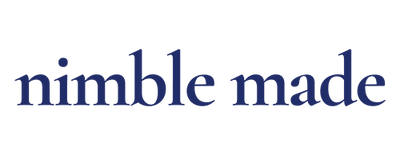
Dress Shirt Pocket Styles
Dress shirt pocket styles require the right insight to ensure that you choose the best one for the occasion. Pick the wrong one, and you risk looking woefully out of place. If you often feel overwhelmed or just downright confused over dress shirt pockets, I’ve got the fix you need.
Here, you and I will go over the various pocket styles for your consideration. We’ll also talk about whether you even need to wear a shirt with a pocket, depending on the event. So let’s get right to it and set the record straight on which pocket style you should go with.
With Pockets or Without Pockets?
Is it better for a dress shirt to be with pockets or without pockets? If you wear shirts often, you may have asked yourself this question at least once, especially if you have a tailor-made shirt.
Formal clothing like dress shirts is easily one of the must-have items in every man’s wardrobe. This is an aperitif that can be worn anywhere according to the occasion, whether for work or relaxing with friends and colleagues.
In fact, all customizations such as collars, buttons, cuffs, and front pockets determine whether the shirt is formal, semi-formal, casual, or business casual. Therefore, it is important to choose and customize the most suitable one for you.
The shirt pocket is a detail that has recently appeared, especially to cope with some practical needs or to lessen formality. Vests are not used much now. As such, the pockets on your shirt sometimes seem to be indispensable.
For example, think about whether you need to carry small items such as business cards, writing utensils, money, and so on with you. It is important that your pocket not be overly exaggerated. Moreover, you want to make sure that it does not affect the shape of your shirt.
Therefore, the conflict of choosing a dress shirt with a pocket versus without a pocket can be easily resolved. Simply consider your needs, taste, and environment. For example, if you are used to carrying something with you, a shirt with pockets may be your ideal practical solution.
If you are looking for clothing for more formal occasions, please pay attention to the rules of etiquette and prefer formal shirts without pockets. Here are a series of simple tips to help you understand the circumstances under which you can pay for it and where to consider etiquette.
Choosing a Dress Shirt with a Pocket
The pocketless shirt is undoubtedly the most formal version when it comes to types of dress shirts. The sleek, concise, and clean front makes it ideal for all formal events.

In ceremonies or particularly solemn occasions, especially when it is necessary to wear a tuxedo, morning dress/tuxedo, or wedding suit for the groom, the shirt is usually characterized by a formal neckline and cuffs, so pockets are completely excluded and prohibited by elegant codes.
It also applies to other places. If your workplace is very corporate or conservative, you may have to wear only elegant formal shirts with no pockets. If you happen to take off your jacket during a meeting, the visual symmetry created by the tie will be hindered by the presence of the pocket. Therefore, a shirt with a chest pocket will appear unbalanced.

Read our guide on how to fold a dress shirt.
Shirts with pockets look more casual and sporty, perfect for occasions where you can freely choose a more relaxed and less “stiff” style. Considering that the dress code in the workplace is more casual, it is also approved in some commercial work environments.
In addition to highlighting the characteristics of the style and shirt, the chest pocket is also a comfortable place to hang sunglasses, store business cards, and other small items in summer. Although if the pockets are not used frequently, they will add a certain depth to the shirt and also give it a more dynamic appearance.
Please note that the presence of pockets is usually combined with the presence of normal plackets. With this in mind, we can distinguish two different types of shirt pockets: round pockets and pointed pockets.
Pointed Pocket
An angled breast pocket is the most informal solution: more conspicuous and eye-catching, characterized by the typical downwardly extending tip and additional seams. It is perfect for matching a more sporty shirt. In leisure time, you can pass the following Way to distinguish button collar.
Round Pocket
The round chest pocket is the most indiscriminate solution, best suited for a relaxed working environment. It is a perfect compromise between etiquette and function. A perfect compromise between serious and discreet pockets contains its essential function and practicality.
Western Flap Pocket

To complete your perfect western shirt, or to design a special casual custom shirt of your dreams, consider western flap pockets. These pockets are larger than single-corner pockets, in addition to buttons and Western-style flaps with curved edges. They are 4 5/8” x 6”, including flaps. The button will match the other buttons on the shirt. The flaps contain lightweight, unfused interlining.
Utility Pocket
Another practical casual style is a utility pocket design. These pockets are larger than most of the standard round pockets, with a button closure, and the left pocket has a unique pen case detail. For most sizes, they are 5 inches x 5 3/4 inches.
On a particularly small shirt size, the pocket size is reduced to 4 1/4” x 5”. For oversized shirts, the pocket size is increased to 6 inches x 6 1/2 inches. The button will match the other buttons on the shirt.
Rounded Flap Pocket
For a practical and casual look, try a round flap pocket. These pockets are larger than most standard round pockets and also have button closures and round flaps. For most sizes, the size, including the flip cover, is 4 7/8” x 6 3/8”.
On a particularly small shirt size, the pocket size is reduced to 4 3/8” x 5 3/4”. The button will match the other buttons on the shirt. The flaps contain lightweight, unfused interlining.
Safari Pocket
The safari pocket style features two casual chest pockets with button closures, pleated pockets with diagonal flaps, and mitered edges. It’s a style that’s inspired by vintage hunting shirts. For most sizes, the size, including the flip cover, is 4 7/8” x 5 7/8”. On a particularly small shirt size, the pocket size is reduced to 4 3/8” x 5 1/4”. The button will match the other buttons on the shirt. The flaps contain lightweight, unfused interlining.
Extra Large Rounded Pocket
The Extra Large Rounded Pocket is the largest dress shirt pocket style, which can hold your best pen or larger smartphone. The position of the pocket is such that the top of the pocket is slightly higher than the second buttonhole (under the collar).
Most shirts have pockets of 5 5/16 inches x 6 1/2 inches, but very small shirts will be slightly smaller (4 1/4 inches x 5 inches) and slightly larger (6 5/16 inches x 7 1 / 2″) for very large shirts.
All things considered, there are only two reasons to choose a shirt with pockets. The first is if you want to dress elegantly without being overly formal. Another reason is that you may want to wear a shirt that can also be used at work.
In this case, shirts with pockets increase practicality, especially in summer when it is unlikely to wear a jacket (and tie) at work. There are, of course, times when pockets can actually come in handy. Conversely, when the dress code is very formal, there is only one option: a shirt without pockets.
Wrap Up
Deciding whether to wear pockets doesn’t have to be a challenging task. Consider the given dress code and ask yourself whether you will even be using your pockets while attending the event or social gathering.
How does your pocket make your shirt look in regards to the event, such as a wedding? If you can find no reasonable explanation as to why you’d attend wearing a shirt with a pocket, it’s time to rethink your attire.
Frequently asked questions about shirt pocket styles
What are the different types of pockets in shirts?
Shirts come with a variety of pocket styles, each serving different functions and adding unique design elements. Common types include:
- Patch Pockets: These are sewn onto the surface of the shirt, often used in casual or utility designs.
- Flap Pockets: These have a flap that covers the opening, providing additional security for contents.
- Chest Pockets: Typically found on the front of shirts, these can be either patch or welt style and are commonly used for convenience.
- Slot Pockets: These are narrow, vertical pockets often found in more tailored or dress shirts.
What are slant pockets called?
A: Slant pockets are also known as angled pockets. This design features an opening that is tilted at a slant, making them more accessible and often adding a stylish touch. They are commonly used in dress pants and blazers for both aesthetic appeal and functionality.
What is the difference between a besom pocket and a welt pocket?
Besom pockets and welt pockets are both sleek and elegant, but they have distinct characteristics:
-
Besom Pocket: This type has a narrow opening with a very clean, discreet finish. It’s typically used in formal wear, with the pocket opening being covered by a piece of fabric (the besom) that creates a sleek appearance. It often lacks a flap or visible stitching.
-
Welt Pocket: This design involves a more visible welt (a strip of fabric) that frames the pocket opening. It can be single or double welted, giving it a more prominent and decorative look. Welt pockets are often found in jackets and trousers.
What is a slash pocket?
A slash pocket is a type of pocket with a diagonal opening, often integrated into the side seams of jackets and trousers. Its angled design makes it easy to access and adds a stylish element to the garment. Slash pockets are particularly popular in casual and business attire due to their functional and sleek appearance.



Comments (0)
Back to News